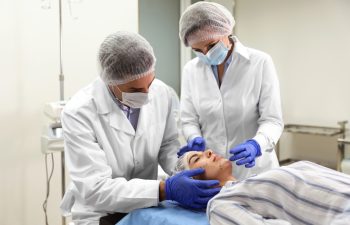5 Tips for Training Your Aesthetic Practice Employees

While it’s undoubtedly essential to take the time and effort to seek out and hire the right people for your practice, it’s the effort that could be spent in vain if you don’t follow up with excellent aesthetic training.
It’s easy for physicians and other medical practitioners to feel that energy and years of education should be focused on patient care, research, and staying abreast of clinical advancements. Staff education, they reason, should be the responsibility of practice managers.
As the physician or practitioner at the head of the practice, you play an important role in staff development by supporting it in your attitude and budget, encouraging it by example, and establishing it as a priority.
It all boils down to this: if staff development and education aren’t a priority for you, they won’t be a priority for anyone under you. Here are some tips for the successful training and development of your clinic staff.
Onboarding
“Orientation” is no longer just a matter of a tour, necessary information about the practice, and face-to-face meetings with new co-workers. These days, it’s called onboarding, and it’s a long process with a much broader goal.
Onboarding is an orientation process with the goal of decreasing the time it takes for a new employee to become productive, and it should start before the employee’s first day and continue for several months.
Your new employee’s workspace and other essentials like email account, phone line, and name badge should all be ready to go on day one.
You should have an established aesthetics training program to introduce relevant office procedures. A supervisor or experienced staff member should have explicit responsibilities in training and coaching. There should also be actual work for the new hire to perform during part of the first day.
But onboarding is not a one-way street. When your new hires arrive, ask them about their concerns, what they wish to learn, whom they want to meet. Try to uncover what motivates them. After some time has passed, ask each of them for feedback about the onboarding process and how it might be improved for future hires.
Be effective
Too often, staff training involves assigning another staff member the task of on-the-job training. While this can be great if the staff member assigned is a knowledgeable and proficient trainer. If not, however, it can be the equivalent of learning to swim by being pushed into the deep end of the pool – with weights in your pockets.
Instead of giving your new hires a shove and hoping for the best, make sure your training is built around a structured list of tasks and subjects to be covered as well as performance standards to be achieved and the estimated time needed for training in each area. Expending this effort in advance can be the difference between confident and efficient employees and those who end up effectively training your next new hire.
Don’t stop
The secret of top-notch training is that it’s never ending. There’s always more to learn and new ways for your staff to grow and expand their capabilities. Training should be a process that continues throughout an employee’s tenure. Simply hiring competent people, paying them competitive wages, and expecting them to perform well indefinitely is a misguided strategy and ignores the vital connection between performance and personal development.
Providing ongoing aesthetic training programs equips your employees with new tools to confidently grow in areas such as customer service, effective communication, and conflict resolution. Also, cross-functional training of all staff can offer obvious advantages in providing leave-time coverage and maintaining continuity in case of abrupt departures. It also provides employees a chance to see what others do and gives them a greater understanding of the overall practice.
Leadership development
Training in leadership skills is not something that should be reserved only for executives and supervisors. The ability to communicate effectively, develop and contribute to team culture, and effectively resolve conflicts – in short, leadership skills – are things that can help all of your staff be more effective performers. They’re also skills that will serve them well as they continue to grow in their careers.
The rules
Too often, physicians and managers rely on common sense or cling to what they learned in a seminar ten years ago when it comes to OSHA, equal employment, and other legal issues or statutes related to hiring, training, and other human resources practices.
Employment law is continually evolving, and ignorance of new statutes or regulations is no defense when you inadvertently make a misstep. Be sure that you and all senior management in your practice regularly participate in education regarding workforce regulations. Inform both physicians and employees about all relevant requirements and best practices.
To stay “in the know” with everything from business best practices to continued education training, join the revolutionary AAAMS Aesthetics Network! Members gain access to training courses and discounts, peer-led discussions on new research or techniques, guidance on tricky cases by aesthetics experts, and so much more.
Posted on behalf of
640 South San Vicente, Suite 410
Los Angeles, CA 90048
Phone: (310) 274-9955
info@aaams.net
Monday - Friday 9:00 AM – 5:00 PM
